Sidon (1)
Q163490Sidon (Hebrew: צִידוֹן, Ṣîdôn; Greek: Σιδών): port in Phoenicia, modern Ṣaydā.
Bronze Age
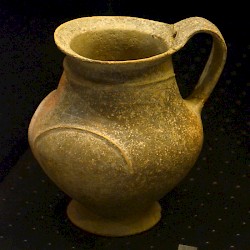
Situated on a promontory halfway between Tyre and Berytus, Sidon was one of the main ports of the ancient Levant. At Dakerman, just south of the modern town, archaeologists have found the remains of Chalcolithic village, going back to about 4000 BCE, with rectangular houses resembling those in Byblos. The excavations at the site of a former college to the south of the historical center have brought to light many finds from the Bronze Age, including a very large sanctuary. There are traces of destruction in about 2600 BCE, after which the site was abandoned for six centuries.
The Middle Bronze Age (c.2000-c.1550) is known from a cemetery, while the Late Bronze Age is documented in the Building of Tausret, named after a cartouche of the Egyptian queen (r.1190-1188) of the Nineteenth Dynasty.
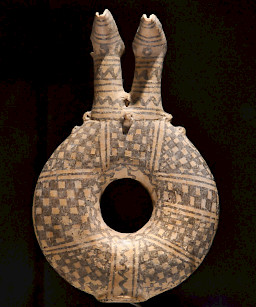
In this age, Sidon belonged to the Egyptian zone of influence and the city is mentioned several times in the Amarna Letters, which include several messages from king Zimrida of Sidon. We also learn that Amenhotep III once visited the city.note It is also one the towns mentioned in the account written by the Egyptian diplomat Wen-Amun.
The city is also referred to in Ugaritic and Hittite texts and appears to have been the most important city of this age. These sources refer to Sidon as Sidon, not translating the name, which can no longer have had a recognizable meaning. It was already discussed in Antiquity: the Roman author Justin, summarizing an earlier history, believed Sidon meant something like "fish".note Scholars have not been able to find a Semitic word that allows this etymology and it is possible that the city was in fact named after a god named Sid. Other deities venerated in Sidon were Astartenote and Eshmun, whose sanctuary has been excavated in Bustan esh‑Sheikh.
Assyrian Age
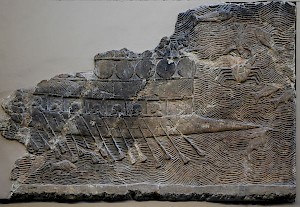
The region was barely touched during the crisis that is commonly associated with the arrival of the "Sea People", allowing the Phoenician cities to expand their trade networks to the far west. A colonization movement started. Although Tyre was more successful and would replace Sidon as most important city, Sidon founded colonies as well. One of these may have been Lepcis Magna.note It is interesting that for the first Greek authors, “Sidon” was just another word for “Phoenicia”. Homer praises Sidon's silverwork and embroidery.note
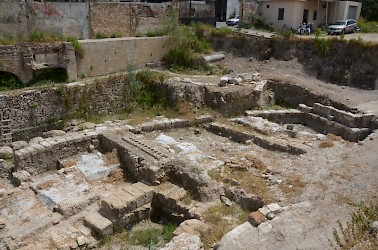
One factor that contributed to the colonization movement was the rise of the Assyrian Empire. According to the text known as ANET3 276, king Aššurnasirpal II (r.883-859) reached the Mediterranean, and accepted tribute from the coastal cities, including Sidon, where the people understood that they had to pay or face their land being looted. Later, more peaceful conditions returned, and Aššurnasirpal invited his subject kings to be present when he inaugurated his palace at Kalhu (Nimrud).note
The next king of Assyria, Šalmaneser III (r.858-824), looted the land and demanded tribute from such minor powers as Sidon, Tyre, and Israel (842 and 839 BCE). This last-mentioned kingdom was, at that time, ruled by king Ahab (r.873-852), who was married to Jezebel, a daughter of king Ethba'al of Sidon.note (It is possible that he was at the same time king of Tyre.) This marriage shows that the Sidonians were not only interested in expansion to the west, but understood the need to protect their rear as well.
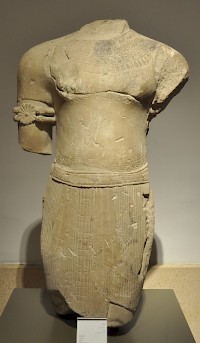
The next Assyrian king to demand tribute was king Adad-Nirari III (r.811-783). The Tell al-Rimah Stela and the Nimrud Slab record further tributes paid at the beginning of the eighth century. In his Annals, Tiglath-pileser III (r.745-727) records tribute from several towns in the far west, but he does not mention Sidon, which suggests that the city was either part of Tyre or in some way privileged. If the latter is true, the relations deteriorated during the reign of Esarhaddon (r.680-669 BCE), who was very interested in the western provinces and conquered Sidon in 677/676.note The city was sacked, its king Abdilmilkutti was forced to fly.
The territory of Sidon was added to the Assyrian Empire; the governor of the new province resided in Sidon, which had been refounded as Kar-Aššur-aha-iddina, “Port of Esarhaddon”, and used as naval base for a successful attack on Egypt, which took place in 671-669. Sidonian kings are no longer mentioned; only the Biblical prophet Jeremiah refers to them,note and these lines may be interpolated.
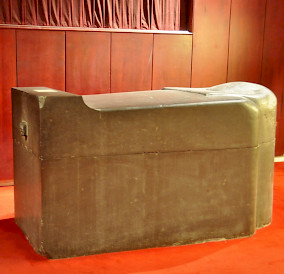
However, Assyria seems to have suffered from imperial overstretch. Egypt turned out to be hard to keep. King Aššurbanipal (r.669-627) did sack its southern capital Thebes, but eventually had to give up the country of the Nile. One of his local vassals, Psammetichus, hired Greek and Carian mercenaries, managed to reunite Egypt and regain its independence. At the same time, the Medes and Babylonians attacked Assyria. Minor political leaders like king Josiah of Judah (r.640-610) contributed to the decline by conquering parts of the Assyrian empire. In 612, the Medes and Babylonians captured Nineveh.note
In this age, Sidon was famous for producing glass and purple dye (a murex hill survives to the south of the city). Its cedar wood was famous: no one cut those trees like the Sidonians, the Bible quotes king Solomon.note The city's prosperity made Sidon a logical target, first for the Assyrians, nad now for the Egyptians.